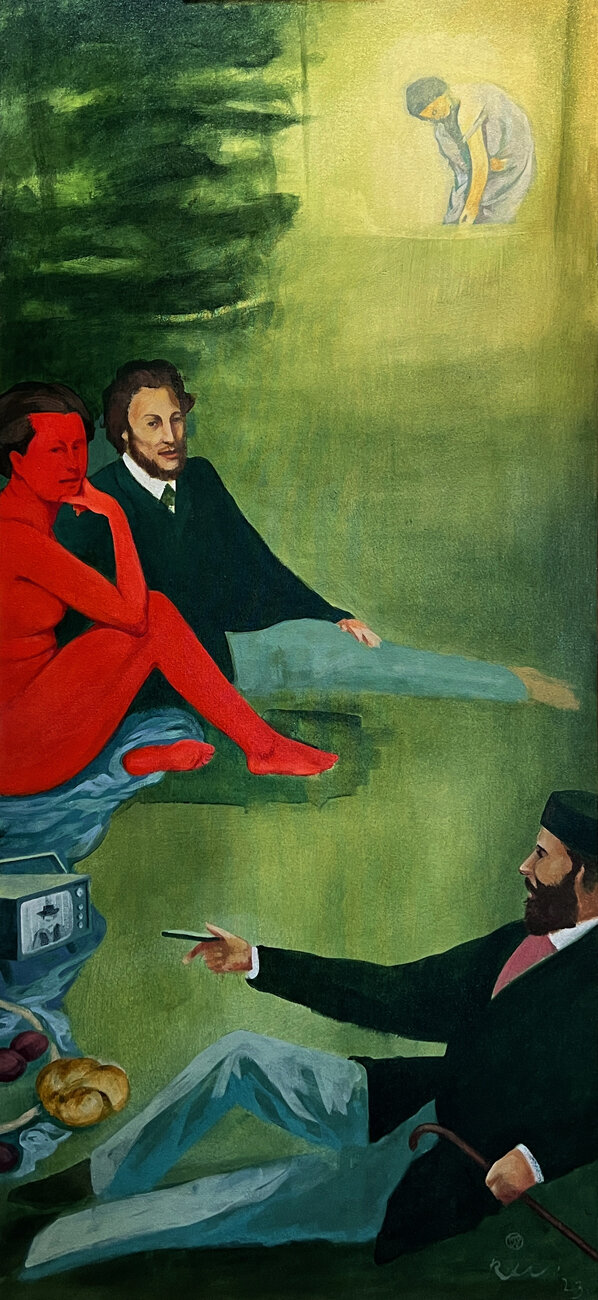Mansplaining sur l'Herbe
Mansplaining sur ‘Herbe; R Williamson, acrylic on canvas; 56” tall x 25” wide; 5/23
The outlier in the current group of new at my new show, Hive Mind, is this whimsical take on the famous painting by Edouard Manet, titled ‘Le Dejuener sur l’Herbe’. It all started when I was looking to drop some figures into another landscape that I was working on. Falling on the woman from this work, with her absence of clothes and enigmatic gaze at or past the viewer, I then took a deeper dive in the original painting itself.
Then with a third vertical canvas to fill, I took aim at crafting an arrangement of all 4 figures from the painting into this format and giving new purpose to the outstretched arm of the dandy in the foreground. It was somewhat of a lark, but like many larks, a fun one. I was still painting on it on the day that I hung the show, so perhaps it’s not done.
It has elicited much feedback and questions, but what has been surprising to me is that the people asking, even if they’re a similar age as me, don’t connect it to the Manet or even have a knowledge of that original work at all. I can’t imagine what this might look like to someone who doesn’t have the Manet as a point of reference. (Mostly I’ve been asked why the woman is red.) To my mind it’s such a famous work in the West, but once again I’ve overestimated how much art history education is common out there.
As a side note, at the Picasso Museum in Paris last fall, I saw several whole rooms devoted to his derivative paintings and drawings based on the original Manet. No doubt this had an influence on my choice when I needed the figure for the landscape. The ‘Mansplaining’ that I use in my title refers to the what always felt to me as the arrogant and aloof attitude of the two dapper French men in the original.
The Judgement of Paris - detail from an engraving by Raimondi, based on a drawing by Raphael
A source of the original figure arrangement seems to be an old engraving that Manet was familiar with, based on a drawing by Raphael. In this version the outstretched arm of the figure in the foreground makes somewhat more sense, as it’s grasping some kind of tool that was used for cutting the reeds.


